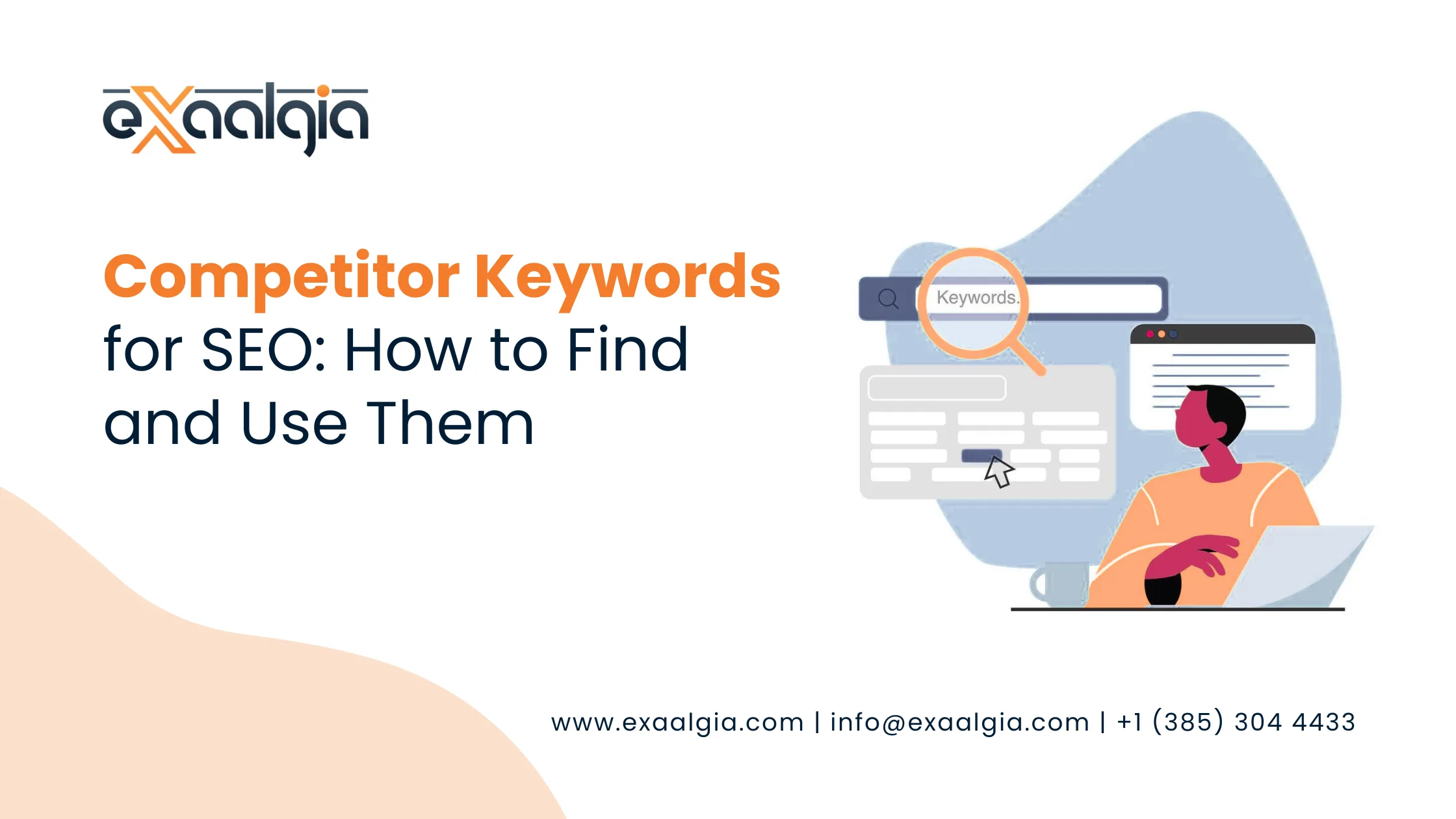Ranking your corporate site is one thing, gaining the top three places in the ‘local pack’ and the first page of organic results for each and every branch you run is another. Multi location SEO is an area that is very particular and requires meticulousness, good coordination, and a scalable framework. If you do not have a disciplined strategy, your local presence will be divided resulting in lost users, less walking in customers, and your competitors occupying local market share.
The detailed guide splits the intricate problem of local search scaling into six steps that can be taken. This is the system that fast growing, multi branch businesses rely on to get consistent visibility and performance throughout their locations. If you are willing to go beyond the simple local optimization and apply a truly enterprise level strategy, then this framework is the starting point for you.
Step 1. Create Location Landing Pages
Your main corporate site is your digital headquarters, but local landing pages are the respective market storefronts. These pages are the foundation of your multi location SEO strategy, facilitating search engines and customers looking for location specific information.
The Core Principles of High-Performing Local Pages
One of the mistakes made frequently is employing generic templates, which only change the city name to the one in question, and then just sit back. Google’s E-E-A-T (Experience, Expertise, Authoritativeness, and Trustworthiness) guidelines require a more profound and individual approach.
Key Requirements for a Superior Location Landing Page:
Unique, Geo-Relevant Content: Content needs to surpass just writing about the services offered in general terms. Talk about local partners, engagement with the community, local staff’s know-how, or city-specific promotions. This engagement is an indicator of your commitment to the local community.
Unique Title Tags and Meta Descriptions: Format [Primary Service] in [City Name] | [Brand Name]. This is mandatory for organic visibility.
Local Business Schema Markup: Deploy LocalBusiness schema (or even more specific types like FinancialService, AutomotiveRepair, etc.). This microdata provides search engines with precise information about your business such as identity, service, and location, which in turn increases your ranking in localized searches.
Consistent NAP Display: Name, Address, and Phone Number (NAP) should be clearly displayed and clickable (for the phone number) on the page, and the information should be the same as that used in all other online profiles.
Embedded Google Map: Show an embedded, interactive map widget with the precise location of the business.
Local Testimonials: Add three to five testimonials or review snippets that specifically refer to that location as a way to enhance social proof and local E-E-A-T.
Creating an architecture that is scalable for hundreds of pages is going to need powerful CMS tools, but the content strategy should be mainly focused on localization rather than on simple duplication.
Step 2. Build and Optimize Google Business Profiles for Every Location
The Google business profile (GBP), which was previously referred to as Google My Business (GMB), is undoubtedly the most significant factor responsible for local visibility and it directly influences the main results displayed as ‘Local Pack’. For an enterprise with many locations, having one poorly handled GBP could harm the whole market’s performance.
Enterprise-Level GBP Management
The number of profiles is so high that manual management is unfeasible. It is essential to have a centralized system, but at the same time, it is necessary to consider each profile as a separate unique asset.
Critical Optimization Tasks:
Category Accuracy: Choose the main and secondary categories that correctly illustrate your main product/service. Where necessary, be consistent but also make distinctions (e.g., a branch that offers a particular, distinctive service).
Unique Business Descriptions: The mission of your company is the same overall, but the descriptions for each place should point out a unique feature or have a local emphasis. Do not copy-paste.
Geo-Tagged Photos and Videos: Professional, top-notch photos that are particular to the store must be uploaded. Make sure that photos are geo-tagged (or use tools to add this data) to emphasize the location relevance.
Consistent Posting and Q&A Monitoring: To make the best use of the GBP Posts feature, local events, promotions, or news can be revealed. Above all, supervise and answer all Q&A questions urgently and in a professional manner, as these are the factors that affect customer perception and ranking, thus being crucial.
Service and Product Listings: Enumerate the exact services and products which are offered at that branch. This will enhance your GBP and make it more appealing to long-tail searches.
For companies that have numerous locations, through Google’s bulk verification and management tools or a third-party management platform, using these tools becomes a must for data quality and time-saving.
Step 3. Collect and Manage Reviews
In the context of multi-location SEO, reviews are an unequivocal indication of both reliability and customer satisfaction. The reviews will play their part in determining ranking factors (quantity, quality, and velocity) and will also have a strong impact on the local pack CTRs. A top-notch company will have an organized and compliant review strategy.
Turning Reviews into a Competitive Advantage
The purpose is not only to have reviews, it is rather to turn them into a never-ending, large scale process, and then to utilize their content.
A Professional Review Strategy Checklist:
1. Systematic Solicitation: It is essential to create a customer-post transaction process (for example, email follow-ups, SMS, or QR codes at the place of the physical location) through which customers can be encouraged to provide their reviews. Make this customer engagement as smooth as possible by giving them a direct link to the GBP review page.
2. Reputation Monitoring: Monitoring software should be used to keep an eye on reviews and track them on Google, Yelp, Facebook, and other industry-specific platforms (e.g. TripAdvisor for hospitality, Zillow for real estate). The prompt awareness will help in giving timely responses.
3. Proficient Response Art:
- Reactions to Every Feedback: Give a quick thank you to positive feedback that mentions the business name and its location (like “Thank you for your visit at our [Brand Name] Boston store!”).
- Gracefully Manage Unfavorable Reviews: Always avoid confrontation. Admit the problem, express regret for the experience, and then propose to discuss it privately (for instance, “We apologize for the inconvenience caused to you. Our branch manager, [Name], directly at [phone number] can help you and us discuss this matter in private.”). This method of response being public but professional shows future customers that the company is responsible.
4. Content Utilization: Apply the text of the review and the star ratings on your location landing pages (via review schema) and in the advertisements. This will create a strong internal feedback loop for both SEO and operations.
Step 4. Ensure NAP Consistency and Manage Citations
NAP consistency (Name, Address, Phone Number) is the basis of everything. Search engines pass trust to your brand by checking this vital business information against many other sources on the internet. Inconsistencies, however small (like “St.” versus “Street” or different formats for phone numbers), result in ‘data drift’ and thereby confuse the search engine algorithms, leading to less ranking confidence.
Constructing a Fortress of Uniform Data
Citations refer to any mention of your business NAP on a third-party website like business directories, local directories, or data aggregators.
The Citation Management Protocol:
Establish a Master Data File: The very first step before any submissions is the creation of a single, definitive spreadsheet containing the exact NAP format for every location. This will be the reference point for all automated and manual submissions.
Data Aggregators at the Top: Make sure that your data gets through and is widely accepted by the main aggregators (like Infogroup, Neustar/Localeze, Foursquare, etc.). Aggregators distribute data to countless smaller directories.
Directories Based on Industry and Location: Besides the regular directories (Yelp, YellowPages), direct your efforts towards niche directories that are significant for your industry (like Healthgrades for medical, Avvo for legal) and highly ranked local Chamber of Commerce websites.
Audits and Cleanup of NAP: The data drift is always there. Companies get merged, phone numbers change, and profiles are made by mistake. You need to run audits every now and then using tools that search the web for wrong or duplicated listings and then manually fix them. This cleanup is labor-intensive but very important to ensure that you are not losing out on your local ranking potential.
Step 5. Build Local Backlinks That Do Move the Needle
Links are still a strong SEO signal, but in the case of multi-location SEO, the emphasis is on local authority instead of overall domain power. A national link is great, but a reliable link from a local news site or charity is far more helpful for local positioning.
Hyper-Local Link Building Tactics
No more mass emailing campaigns. Multi location link building means integration with the community and relevance.
Local Link Building Strategies that Work:
Sponsorship and Events: You can do sponsorship of different things like local non profits youth sports teams, or city wide community events where your branch is located. When the local group updates its website with the list of sponsors, you are the lucky one to get a very relevant local link.
Local Resource Guides: Find out which local bloggers, universities, or city websites have resource guides (for instance, “best local restaurants,” “top financial planners in [City]”). Approach them asking for inclusion on their resource list.
Chamber of Commerce and Local Partnerships: By just being a member of the local Chamber of Commerce, you will most likely get a link in their directory. Partner locally with non-competing businesses, for example gyms and therapists, to generate effective co-marketing and link-building opportunities.
Local PR and News: Your PR efforts should be pointed at local newspapers. By announcing a new branch opening, a big donation, or a community project, you will attract their interest. These releases frequently result in links from local digital newspapers with high authority.
It’s important to give local managers authority to create relationships that eventually generate strong, high-quality backlinks.
Step 6. Track and Attribute Performance by Location
National SEO tracks one result, multi-location SEO must attribute performance across hundreds of individual markets for true success. Location wise performance measurement is not precise, you can neither scale successes nor point out the weak spots.
Granular Reporting for Scalable Success
To ensure accurate tracking, it is necessary to combine data from different sources and develop a consolidated performance dashboard.
Key Performance Indicators (KPIs) to Track Per Location:
Local Pack Performance: Keep an eye on views from GBP, website clicks from GBP, phone calls made from GBP, and requests for directions. You can monitor these metrics through tools available over time, thereby detecting the changes caused by your optimization efforts.
Organic Ranking for Geo-Specific Keywords: Monitor the position of your local landing pages in the search results for phrases such as “service + city” (like plumber Denver). Use particular rank-tracking applications that imitate searches done from inside the targeted city to get reliable local results.
Conversion Attribution: Use call tracking software with unique numbers for every location’s landing page and GBP and implement it across your phone lines. This will enable you to recognize phone leads according to the source (organic, local pack, paid search, etc.) and the specific branch.
Website Traffic Segmentation: Google Analytics or a similar tool can be used to divide traffic and conversions according to the location landing page. This will give you a clear understanding of the performance of each individual asset.
With detailed information, the central marketing team quickly identifies underperforming markets and deploys resources for focused improvement actions.
Enhance Your Multi-Location SEO Strategy
The path to multi location SEO supremacy is not a quick one, it’s a systematic, scalable marathon. Success for a multi-branch business comes from coordinating every landing page, GBP, and citation into a seamless system.
This structure is your plan for changing untidy, ineffective local efforts into a centralized, data-driven system. By optimizing hyper-local content, ensuring consistent data, and gaining local authority, your locations dominate search results everywhere.
Multi local SEO should not be seen as a task that has to be done, it should be considered the most powerful customer acquisition engine. The only way to scale and win in the local market is through an unshakable commitment to this six step system.
FAQs
1. What is Multi Location SEO?
Multi Location SEO is optimized for visibility of more than one location at a time. It does so for all Google Map searches, local search results, and consequently makes possible the finding of the right branch by the customers with ease.
2. Why is Multi Location SEO important for growing brands?
There is a great necessity for separate local visibility for brands that have more than one location. Multi-Location SEO boosts every branch’s ranking, increasing local traffic, and building customer trust via reviews and citations.
3. How do location landing pages help in Multi Location SEO?
Location landing pages act as the bridge between Google and your business in regard to each city. These pages signal location relevance to Google, making your business eligible for local, service-specific keyword rankings.
4. What is the role of Google Business Profiles in Multi Location SEO?
Google Business Profiles keep listing your locations both on Maps and in local packs. Optimized, engaged profiles boost visibility, resulting in more calls and drawing in local customers.
5. How do I track the performance of each location separately?
UTMs, phone numbers that are specific to locations, local forms, and data-centralized dashboards all are the methods you can use. These tools monitor each branch’s incoming calls, clicks, rankings, and conversions data.







